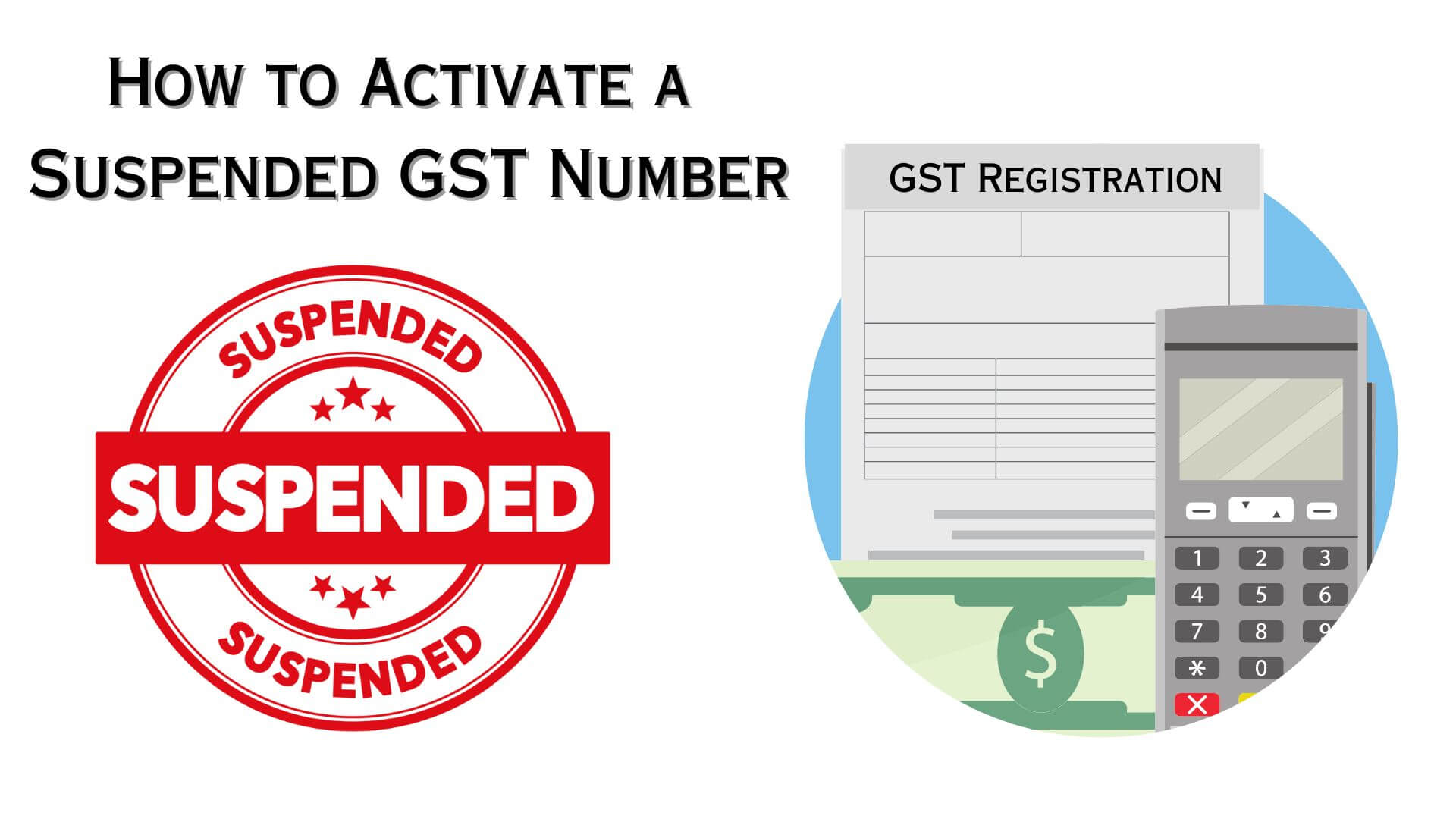Easiest Way to how Activate a Suspended GST
Number
The process for reactivating a suspended Goods and Services
Tax (GST) number varies by country, as GST is implemented differently in
different regions. Below are general steps that you may need to follow.
However, it's important to note that the specific procedures can differ, and
you should consult the tax authority or relevant government agency in your
country for accurate and up-to-date information. As of my last knowledge update
in January 2022, the process might have changed, so it's essential to verify
the details.
Here's a
general guide how to activate online suspended GST Number
1. Determine the
Reason for Suspension:
Find out why your GST number was suspended. Common reasons
for suspension include non-compliance with filing or payment requirements.
2. Rectify the
Issues:
Address the issues that led to the suspension. This may
involve filing overdue returns, paying outstanding taxes, or resolving any
compliance-related matters. Ensure that all required documents are in order.
3. Login to the GST
Portal:
Access the official GST portal in your country. In many
countries, businesses can manage their GST accounts online through a dedicated
portal provided by the tax authorities.
4. Navigate to the
Reactivation Section:
Look for a specific
section on the portal related to reactivating a suspended GST number. This
might be labeled as "Reactivate GST" or similar.
5. Submit Required
Documents:
Some countries may require you to submit certain documents
to support your request for reactivation. These documents may include updated
financial statements, tax returns, or any other documents requested by the tax
authorities.
6. Pay Any
Outstanding Dues:
If there are outstanding tax dues, penalties, or fees, you
may need to clear them before the GST number can be reactivated. Follow the
payment instructions provided on the portal.
7. Wait for Approval:
After submitting the necessary documents and addressing the
issues, you may need to wait for the tax authorities to review your case and
approve the reactivation. This process time can vary.
8. Follow Up:
If necessary, follow
up with the tax authorities to ensure that your request is being processed and
to address any additional requirements or concerns they may have.
9. Comply Going
Forward:
Once your GST number is reactivated, ensure ongoing
compliance with filing and payment requirements to avoid future suspensions.
It's crucial to note that the specific steps and
requirements can vary based on your country's GST regulations. Therefore, it's
recommended to consult directly with the tax authorities or seek professional
advice from a tax consultant who is familiar with the GST laws in your
jurisdiction.
Key points for avoid
Suspended GST Number
Maintaining compliance with Goods and Services Tax (GST)
regulations is crucial to avoid the suspension of your GST number. Here are
some key tips to help you stay in compliance and prevent the suspension of your
GST number:
1. Understand GST
Regulations:
Stay informed about the GST regulations applicable to your
business. Regularly check for updates or changes in the tax laws that may
impact your compliance.
2. Timely Filing of
Returns:
Ensure that you file your GST returns on time. Late filing
can lead to penalties and may result in the suspension of your GST number. Set
up reminders or use automation tools to stay on top of filing deadlines.
3. Accurate
Reporting:
Provide accurate information in your GST returns. Errors or
discrepancies in reporting can lead to compliance issues. Reconcile your
financial records regularly to ensure consistency.
4. Prompt Payment of
GST Dues:
Pay your GST dues on time. Late payments can attract
interest and penalties. Set up systems to track and manage your tax liabilities
to avoid delays in payment.
5. Regular
Reconciliation:
Reconcile your financial records with your GST returns
regularly. This helps identify any discrepancies and allows you to address
issues promptly.
6. Compliance with
Input Tax Credit (ITC) Rules:
Adhere to the rules and conditions for claiming Input Tax
Credit. Ensure that you have the necessary documentation to support your ITC
claims.
7. Update Business
Details:
Keep your business details, such as address, contact
information, and legal entity details, updated with the tax authorities.
Changes in business details should be promptly communicated.
8. Educate Your Team:
Train your staff on GST compliance requirements. Make sure
they understand the importance of timely filing, accurate reporting, and
adherence to GST rules.
9. Regularly Monitor
GST Portal:
Periodically check the GST portal for any notifications,
updates, or alerts from the tax authorities. Address any issues or requests
promptly to avoid compliance issues.
10. Engage
Professional Help:
If needed, consult with tax professionals or experts to
ensure that you fully understand and comply with the GST regulations. They can
provide valuable advice and assistance in maintaining compliance.
11. Use Automation
Tools:
Utilize accounting and GST software to automate and streamline
your tax compliance processes. These tools can help reduce the risk of manual errors
and ensure timely filing.
12. Keep Records
Organized:
Maintain organized records of all financial transactions,
invoices, and supporting documents. This can be helpful during audits or when
addressing inquiries from tax authorities.
By proactively managing your GST compliance and staying
vigilant about deadlines and requirements, you can reduce the risk of a
suspended GST number and contribute to the smooth operation of your business.
Regularly staying updated on changes in tax laws and seeking professional
advice when needed will also be beneficial.
Conclusion
In conclusion, maintaining compliance with Goods and Services
Tax (GST) regulations is essential for businesses to prevent the suspension of
their GST registration numbers. Adhering to filing deadlines, ensuring accuracy in
reporting, promptly paying GST dues, and staying informed about regulatory
changes are key practices to avoid disruptions. Regular reconciliation of financial
records, updating business details, and educating your team on GST compliance
contribute to a proactive approach. Utilizing automation tools, engaging
professional assistance when needed, and keeping meticulous records enhance the
likelihood of sustained compliance. By following these tips, businesses can
minimize the risk of a suspended GST number, fostering a smooth and
uninterrupted operation within the bounds of tax regulations.

